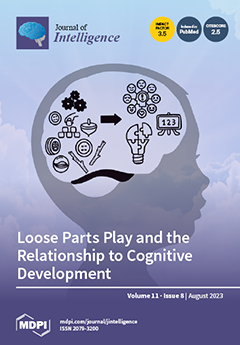(1) Background: The Wechsler intelligence scales are very popular in clinical practice and for research purposes. However, they are time consuming to administer. Therefore, researchers and psychologists have explored the possibility of shorter test battery compositions. (2) Methods: In this study, we investigated
[...] Read more.
(1) Background: The Wechsler intelligence scales are very popular in clinical practice and for research purposes. However, they are time consuming to administer. Therefore, researchers and psychologists have explored the possibility of shorter test battery compositions. (2) Methods: In this study, we investigated 13 potential short forms of the Indonesian version of the Wechsler Adult Intelligence Scale—Fourth Edition (WAIS-IV-ID). An existing standardization data set of 1745 Indonesian participants collected for the validation of the WAIS-IV-ID was used to examine the short forms’ validity. These ranged from 2-subtest versions to 7-subtest versions. Regression analyses with goodness-of-fit measures were performed, and regression equations were determined for each short form to estimate the Full Scale IQ (FSIQ) score. Discrepancies between the FSIQ and the estimated FSIQ (FSIQ
Est) scores were examined and classification accuracies were calculated for each short form (% agreement of intelligence classification between the FSIQ
Est and FSIQ). (3) Results: None of the 13 short form FSIQ
Est values significantly differed from the FSIQ scores based on the full WAIS-IV-ID, and strong correlations were observed between each of these values. The classification accuracies of the short forms were between 56.8% and 81.0%. The 4-subtest short form of the WAIS-IV-ID consisting of the subtests Matrix Reasoning, Information, Arithmetic, and Coding had the optimal balance between best classification values and a short administration duration. The validity of this short form was demonstrated in a second study in an independent sample (
N = 20). (4) Conclusions: Based on the results presented here, the WAIS-IV-ID short forms are able to reliably estimate the FSIQ, with a significant shorter administration duration. The WAIS-IV-ID short form consisting of four subtests, Matrix Reasoning, Information, Arithmetic, and Coding, was the best version according to our criteria.
Full article






